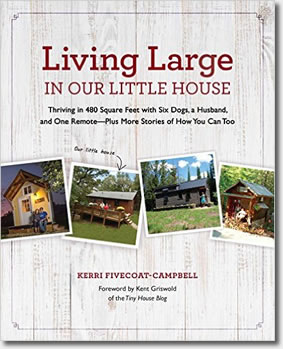Trapped
Sunday was one of those picture-perfect days here in the Ozarks, for February anyway.
It was sunny and warm, between 55-60 degrees by afternoon.
Dale and I took the dogs out on the deck and we all soaked up the sun for awhile and then he decided to head down the hill to bank fish.
He came home later with a report, “No luck fishing, but there was a reason I was supposed to be down there.”
We had been hearing boats all weekend, not unusual on a nice weekend and certainly not unusual this time of the year as the spring fishing tournaments on the big lakes begin.
Dale said when he got down to our cove, Sade Sue, our pittie who warned me of the strange truck in our driveway a few weeks back, started acting sheepish and walking slowly by Dale’s side, a sure sign something’s amiss.
Then he saw an empty boat on the bank. He was curious, it isn’t unusual for hunters to come on the shore during rifle season, but that season is over.
After fishing for a bit, he walked over to the boat and looked in. Nothing but a rifle.
“The guy came around the corner and was very surprised to see me,” Dale recalled.
Dale said the man asked, “You live around here?”
“About a hundred yards up the hill,” Dale replied.
“You have dogs?” Sade was now hiding behind a tree.
When Dale replied we did, the man said, “Oh, I’m laying traps, I will go and pick them up then.”
Dale told him we appreciated him taking his traps away from our house. After all, trapping is legal on Corps property and unlike using a rifle when hunting, there are no laws that say people cannot lay traps within a certain distance from houses.
“I didn’t see any houses up on these hills,” the man told Dale.
Well, of course he can’t when we left the trees to give us privacy from people on the lake, as did my aunt. As well U.S. Army Corps of Engineers regulations prevent anyone from building right along the shores.
Dale told him there are homes all along both sides of this road.
I don’t care for hunting. I understand the purpose for it, we just do not engage in it, and I can certainly understand hunting for food.
I absolutely cannot understand hunting for fur, especially in the way in which these animals suffer, sometimes chewing their own foot off to get loose. No matter if the traps are checked daily, these animals lie in excruciating pain before they either die or are killed when the trapper returns.
“Been catching coyote mostly,” the man told Dale. “But they haven’t been any good, mostly mangy.”
And that’s the problem. These trappers have no idea what they will catch when they “hunt” in this manner, not only undesirable wild animals suffer and die, but family pets as well.
We’ve been coming to this area for over 15 years, but it wasn’t until my aunt moved here and two of her dogs were needlessly caught in traps along the shore that we realized trapping was legal in the winter here.
Both of her dogs survived, although one was missing for two days before my aunt tracked her whines to the trap. The other one somehow tore the trap lose from whatever it was hooked to and came home limping, dragging the trap with him.
The revelation surprised me so that I wrote a piece for a dog magazine detailing all of the public lands on which hunting is permitted in many states. During research for that story, I read of many sad tales when pets were caught in traps and maimed or killed.
We haven’t had problems with traps since we’ve lived here, we figured like with rifle hunters, word had gotten around that this area is now more populated.
We now wonder if Abbi’s horrible paw injury that required two surgeries and 2 months of healing had something to do with traps. Chloe also came home with a large piece of skin ripped from one of her paws on Friday.
We have figured out that if we let them out separately, they’re much less likely to leave the yard, so that’s what we’ve been doing.
Just another worry in paradise.
Did you know trapping is permitted on many public local, state and federal parks and waterways in the winter?









Good article and much food for thought. I do not understand this sort of hunting either, but the first thing that strikes me was the decency of the hunter. Upon learning there were properties and pets nearby, he immediately offered to remove his traps. The ripple effects of this neighborly understanding and your efforts to further inform your community should have a significant impact for area residents, pets and perhaps wildlife as well. Thank you for sharing this.
Thanks, Granny. I’m not sure anyone who could do this to another living thing has any empathy toward any animal. We have to wonder if his generosity was spurred by really not wanting to hurt our dogs or just the fact that possibly catching them would mean more work for him in disposing of undesirables in his traps. Whatever the reason, we’re glad he went away.
Wow, I didn’t realize that fur trapping was allowed like that. My husband’s family would hunt for food growing up and I can understand hunting for that reason, but for fur? That does seem sad.
Unfortunately, the fashion industry has to get its fur from someplace. 🙁
I had no idea that trapping was legal on public lands. Makes me think twice about wandering through the woods.
It should make everyone think twice, Jane. Public lands, by their very definition, should be for all of us to enjoy and expect to be able to safely walk and hike them.
This was a difficult subject to read (and maybe even write?) about, and you bring home the personal part of the story, how it affects your own beloved critters. You always do such a good job with that.
Thank you, Merr.
I know that hunting is allowed in the National Seashore, but it is restricted to something like ONE WEEK. You don’t see many hunters anymore during that week. In the past, I would see deer strapped to the roof of cars on a regular basis then. I’m with you. Hate hunting.
This type of hunting, yes, I do hate it.
If you allow yourself to empathize with the animals and imagine what it must feel like to be stuck in a trap, then I don’t think you could ever bring yourself to do it.
I agree, Alisa. I guess I’ve always been able to empathize with the animals. I believe they feel and know pain and fear. It’s horrific.
I would have a hard time with traps anywhere near my house. At least the guy said he’d remove them, but still … how many others won’t.
I know, Roxanne, exactly what we thought! I just checked and the season runs till March 31, but that doesn’t mean they will pick up all of their traps, either.
What a nightmare! I didn’t realize that trapping was allowed on public land. That’s scary for people with pets or young children. My Dad did some trapping long ago until I pitched the fit of all fits. Being a Daddy’s girl, he decided that having a contented daughter was more important than anything he might catch in a trap. I’m happy to say that he got rid of the traps and only kept the “live” traps…which catch the animal unharmed inside a cage. They can be released in a more appropriate area.
Yes, Lisa, I don’t have a problem with live traps and think they’re especially beneficial in suburban or urban areas where raccoons and squirrels can do damage to homes and gardens. However, they do have to be taken out far away, or they will simply return.
Kerri,
I would love to read the article you wrote showing what state allow this. Is NJ on the list that allows this? I don’t agree with trapping either.
I don’t like that NJ allows bear hunting by saying they come into to peoples yards so there are just too many. Had NJ not allowed urban sprawl the bears wouldn’t be in their yards, guess they didn’t think anything lived in the woods.
Mary, I did the story several years ago and it is was for a print magazine that had yet to put its content online. You can find out your states hunting regulations, including trapping by going to your dept. of wildlife website for the state. I’m sorry, I don’t remember if NJ was one that allowed it, but I know I profiled a woman whose dog was caught in a trap right off of a trail in a fairly populated city on the East Coast. It was shocking where and how trapping is allowed.
http://www.huntnfishregs.com/newjersey/NewJerseyHuntingRegulations.aspx
The traps for coons, muskrats and other critters who live and hunt near water are especially cruel, because they actually submerge the animal and it drowns while desperately trying to free itself. Of course the problem is that human activity has changed the natural order of things. Those animals that are too large or fierce to be killed by coyotes or bobcats don’t have as many predators to control their populations, as they did when there were more mountain lions and bears. They are not good to eat so nobody is going to hunt them for food. The only other option for controlling their numbers is fur trapping, which is cruel and torturous. I have never run into it in our rural area and am glad I haven’t. Just will never understand willfully inflicting suffering on another creature.
In this case, I do not agree with the population control argument, Kathleen. I cannot say for certain in all areas of the country, but we do have black bear here as well as mountain lions. The black bear population is such that there is a hunting season on them and while mountain lions may not be “officially” here, many sane locals I know, myself included, have seen them, if not heard their screeches in the woods. While I agree there is an overpopulation of deer that will die of disease or starve, I’ve never seen numbers here to indicate that raccoons, fox or beavers or even coyotes are populated to menancing numbers.
Animals that adapt and do well in urban settings are most in danger of overpopulating, because they not only thrive in their natural habitat, but suburban areas as well. That is why deer,coyotes, raccoons, foxes as well as other animals are a problem. Though they might not be in excess numbers in your particular area, their numbers statewide probably justify to the Conservation dept., that they should be trapped. I don’t agree with trapping, but have worked closely with Missouri Dept. of Conservation’s natural history biologist and I know how they make decisions about which animals can be hunted, trapped and fished, and how much.
A good example of how urban dwelling animals upset the natural balance is the Great Horned Owl. Great Horned Owls have adapted well to city life and are voracious predators of rodents – a good thing- except Great Horns also prey on smaller, more vulnerable owls like Barred Owls. Eventually, the growing population of Great Horned Owls in cities, spreads to Barred Owl habitat where the smaller owls become prey to the Great Horns. Since the smaller owls are not able to survive in urban areas, their numbers become threatened by the over-abundance of Great Horns. This is just one small example of the way that human activity interferes with the natural way of things and inadvertently causes overpopulation of some species. Fortunately, Great Horned Owls are protected and cannot be hunted, but there is great concern among wildlife and environmental experts about their impact.
Then maybe the conservation departments, in all of their colletive wisdom, should group the animals by locale and region. The raccoons, foxes and beavers that are found out here have nothing to do with the populations in any suburban or even 5 acre “mini farm” areas found in semi-rural areas. I believe that here, trapping has more to do with the mighty dollar than protecting any human population from being overrun with foxes.
….And given my own dealings with the state wildlife bunch here, there’s nothing you can say to convince me of their collective worth. 🙂